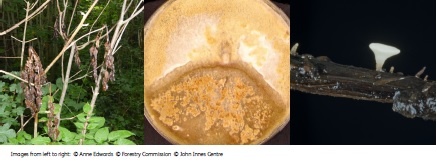null
Population structure and natural selection in the Chalara ash dieback fungus, Hymenoscyphus pseudoalbidus
Led by Professor James Brown, John Innes Centre
james.brown@jic.ac.uk
Ash dieback (ADB), a devastating disease responsible for destroying vast numbers of ash trees in continental Europe and Scandinavia, is on the move. Caused by the fungus Hymenoscyphus pseudoalbidus, the disease was first identified in the UK in 2012 and has since been found at hundreds of sites throughout Britain and Ireland. It is likely that resistance to ash dieback will evolve in the UK ash population over time through natural selection. This poses an important challenge for forest scientists: to accelerate this process so that the UK’s ash population can recover much more rapidly.
This project will investigate the ecological genetics of H. pseudoalbidus and its ability to evolve in response to natural selection. The researchers will look at the vegetative compatibility (VC) of the fungus, the system which allows fungi to distinguish between self and non-self, which could be manipulated to lessen the ash dieback epidemic. Variation in genetic diversity and pathogenicity of H. pseudoalbidus between populations and within trees will be explored, providing insights into the operation of natural selection on the fungus within its host. In addition, the study will look at the relationship between H. pseudoalbidus and the harmless H. albidus, a closely related fungus which is also found in the UK. By gaining vital information about the ash dieback fungus, the researchers hope to promote breeding and management of natural and commercial ash populations to control this aggressive disease.
This project is in partnership with Dr Joan Webber and Professor Clive Brasier at Forest Research, Alice Holt Research Station.
